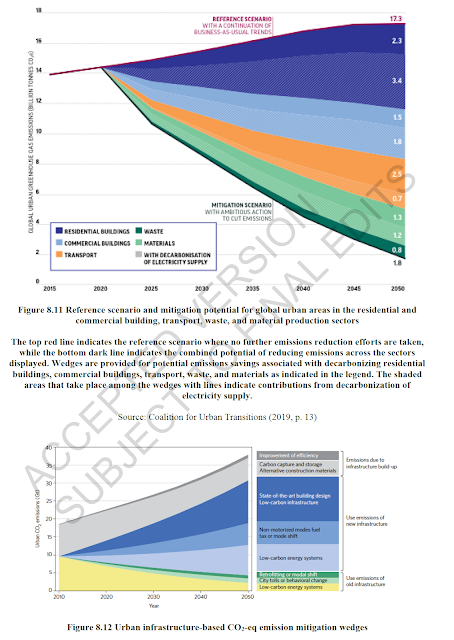Cities have typically been the result of growing wealth in a society. Now they represent opportunities to decarbonize at scale, and just as importantly, ahead of anticipated rapid 21st century growth in developing countries, where with current methods, per-capita greenhouse gas (GHG) emissions are likely to increase. It is estimated that in 2015, cities around the world were responsible for 24.5 GtCO2-eq (gigatons of CO2 equivalent), or 62% of the world total. The 100 largest urban areas on the planet account for about 18% of all GHG emissions.
The urban share of GHG emissions increased from 56% to 62% between 2000 and 2015, though this increase was unevenly distributed around the world, occurring more in developing regions where cities have been rapidly growing. The same was observed in per-capita urban emissions, where the largest increase occurred in developing countries as they built out their infrastructure. Both trends are expected to continue, and represent one of our largest opportunities for mitigation.
- Reducing energy consumption in all sectors;
- Electrifying as much as possible and switching to zero-carbon energy sources;
- Enhancing carbon uptake (i.e. planting trees).
Cities cannot effectively decarbonize by focusing only on
emissions within their city limits. Taking supply chains and out-of-city residents
into account, efficiency and no-carbon energy sourcing must reach beyond the
city’s limits to be effective.
It will be easier to build low- and no-carbon systems in
still-developing cities than to convert existing metropolitan areas, though the
problem will be funding in those typically poorer (still developing) nations
and the political and social will to dramatically change development plans.
Restructuring existing cities, even where money to invest exists, will require
huge political and social efforts. But the potential in creating more
ecologically-minded green and blue spaces within cities, and replacing existing
infrastructure with more efficient and lower-carbon sources, could reduce GHG
emissions by 23-26% by 2050.
Tomorrow: buildings.
Be brave, be steadfast, and be well.











No comments:
Post a Comment